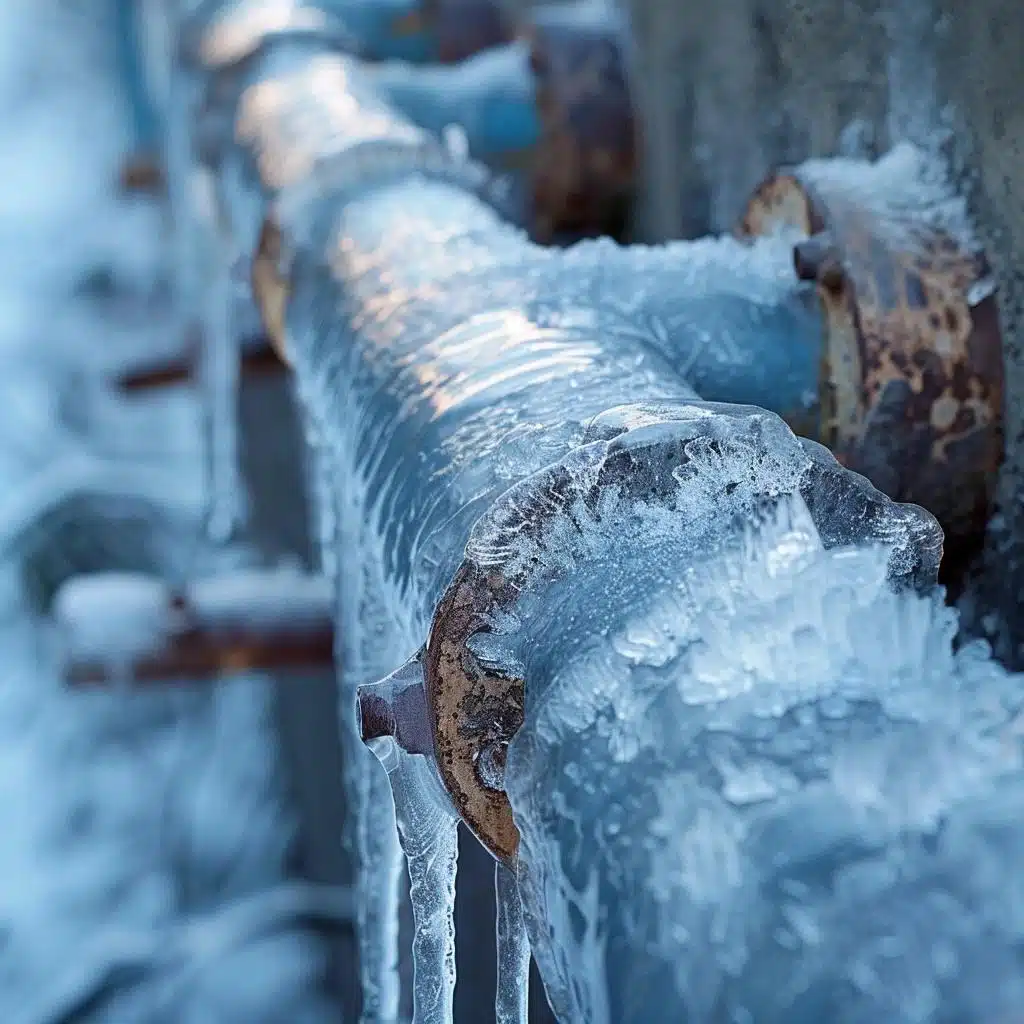Important Tips to Protect Against Frozen Pipes in Winter
Important Tips to Protect Against Frozen Pipes in Winter
Blog Article
They are making several great points regarding Preventing and dealing with frozen pipes in general in this content down below.
:strip_icc()/snow-outdoor-faucet-pipes-4af65d1e5e904fb1aa7bf74071fe5d89.jpg)
Winter can ruin your plumbing, especially by freezing pipes. Below's just how to prevent it from taking place and what to do if it does.
Introduction
As temperature levels decline, the danger of icy pipes boosts, potentially resulting in pricey repairs and water damage. Recognizing how to avoid icy pipelines is essential for house owners in cool environments.
Prevention Tips
Insulating prone pipelines
Cover pipelines in insulation sleeves or make use of warmth tape to protect them from freezing temperatures. Focus on pipes in unheated or exterior areas of the home.
Heating techniques
Keep interior spaces adequately heated, especially locations with pipes. Open up cupboard doors to enable warm air to circulate around pipelines under sinks.
Just how to determine frozen pipes
Seek lowered water flow from faucets, uncommon odors or noises from pipelines, and noticeable frost on exposed pipelines.
Long-Term Solutions
Structural adjustments
Take into consideration rerouting pipelines away from outside walls or unheated locations. Add added insulation to attics, cellars, and crawl spaces.
Updating insulation
Purchase high-quality insulation for pipes, attic rooms, and wall surfaces. Appropriate insulation assists maintain constant temperature levels and lowers the danger of frozen pipes.
Securing Outside Plumbing
Yard tubes and outside taps
Disconnect and drain pipes garden pipes before wintertime. Mount frost-proof spigots or cover exterior faucets with protected caps.
Comprehending Icy Pipes
What triggers pipelines to freeze?
Pipes ice up when revealed to temperatures below 32 ° F (0 ° C) for prolonged durations. As water inside the pipelines ices up, it increases, putting pressure on the pipe walls and potentially triggering them to rupture.
Dangers and problems
Icy pipelines can bring about water supply disturbances, building damage, and expensive repair services. Ruptured pipes can flood homes and cause extensive structural damage.
Signs of Frozen Pipeline
Determining frozen pipes early can prevent them from bursting.
What to Do If Your Pipes Freeze
Immediate activities to take
If you believe icy pipelines, keep faucets open to alleviate pressure as the ice thaws. Utilize a hairdryer or towels soaked in hot water to thaw pipelines slowly.
Conclusion
Preventing icy pipes calls for aggressive steps and quick actions. By comprehending the reasons, indications, and safety nets, homeowners can secure their pipes during cold weather.
6 Proven Ways to Prevent Frozen Pipes and Protect Your Home
Disconnect and Drain Garden Hoses
Before winter arrives, start by disconnecting your garden hoses and draining any remaining water. Close the shut-off valves that supply outdoor hose bibs and leave the outdoor faucet open to allow any residual water to drain. For extra protection, consider using faucet covers throughout the colder months. It’s also important to drain water from any sprinkler supply lines following the manufacturer’s directions.
Insulate Exposed Pipes
Insulating your pipes is an effective way to prevent freezing. Pipe insulation is readily available at home improvement stores and is relatively inexpensive. Pay close attention to pipes in unheated areas such as the attic, basement, crawl spaces, or garage. Apply foam insulation generously to create a buffer against the cold. You can also wrap your pipes in heat tape or thermostat-controlled heat cables for added warmth.
Seal Air Leaks
Inspect your home for any cracks or openings that could let in cold air. Seal any holes around the piping in interior or exterior walls, as well as the sill plates where your home rests on its foundation. Additionally, make sure to keep your garage door closed unless you’re entering or exiting. Leaving it open creates a significant air leak that can lead to frozen pipes.
Allow Warm Air Circulation
During cold snaps, it’s essential to allow warm air to circulate evenly throughout your home. Leave interior doors ajar to promote better airflow. Open kitchen and bathroom cabinets to help distribute heat consistently around the rooms. If you have small children or pets, be sure to remove any household chemicals or potentially harmful cleaners from open cabinets for safety.
Let Faucets Drip
A small trickle of water can make a big difference in preventing ice formation inside your pipes. When temperatures drop significantly, start a drip of water from all faucets served by exposed pipes. This continuous flow helps prevent the water from freezing. Additionally, running a few faucets slightly can relieve pressure inside the pipes, reducing the chances of a rupture if the water inside does freeze.
https://choateshvac.com/6-proven-ways-to-prevent-frozen-pipes-and-protect-your-home/

I'm certainly very inquisitive about How To Avoid Freezing Pipes and I'm hoping you liked my article. You should take the opportunity to share this blog if you enjoyed reading it. Thanks a lot for going through it.
Try Here Report this page